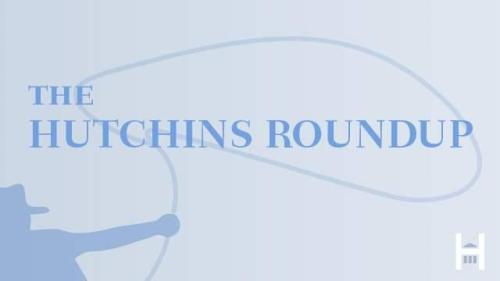Studies in this week’s Hutchins Roundup find that local product markets have become less concentrated, consumers respond unevenly to tax payments and refunds, and more.
Want to receive the Hutchins Roundup as an email? Sign up here to get it in your inbox every Thursday.
While national concentration is rising, local markets are becoming more competitive
Large national firms have become increasingly important to the economy over the past two decades, leading many to conclude that product markets have become less competitive. However, Esteban Rossi-Hansberg of Princeton University, and Pierre-Daniel Sarte and Nicholas Trachter of the Federal Reserve Bank of Richmond find that although concentration has increased at the national level, it has actually declined at the local level. They show that concentration falls when large firms enter local markets, because the new firms compete with local monopolies or because they simply add more establishments to the market. The authors find, for example, that a new Walmart increases the number of competitive retailers in the associated ZIP code for at least seven years after opening. For this reason, they conclude antitrust policymakers may not need to worry about the rising trend in national concentration.
Consumers respond unevenly to tax payments and refunds
Studies show that temporary and predictable increases in income, like tax refunds, lead to much larger increases in household spending than economic theory would suggest. This sensitivity could be a result of behavioral factors like inattention or mental accounting rules, or it could be that households are financially constrained and put off spending until they have the cash. Brian Baugh of the University of Lincoln-Nebraska and coauthors use high-frequency data on transactions and tax filings to study whether U.S. households respond equally to temporary cash inflows and outflows. They find that households increase spending after receiving tax refunds, but do not reduce spending when they are hit by a tax bill, suggesting that financial constraints are the key factor.
Renters are more likely than homeowners to believe housing is a risky investment
Expectations about rising house prices played an important role in the housing boom and bust that led to the Financial Crisis. Researchers have studied in depth how households form price expectations and use them to make decisions, but have focused less on beliefs about the riskiness of house prices. Manuel Adelino of Duke University, Antoinette Schoar of MIT, and Felipe Severino of Dartmouth use survey data from Fannie Mae from 2010 to 2016 to study how households’ perceptions of housing risk inform their decisions to buy versus rent. They show that renters and homeowners have similar expectations about future house prices, but that renters are much more likely to think housing is a risky investment. Renters’ beliefs about risk also respond to changes in house prices very slowly, while current homeowners update their perceptions almost immediately when house prices change. This difference may explain why renters are often among the last to buy homes during housing booms and might prolong the housing cycle, they say.
Chart of the week: US companies continue to draw accumulated earnings from foreign subsidiaries in response to the Tax Cuts and Jobs Act

Quote of the week
“As the year has gone on, the economy has come in stronger than we expected. And that’s a really good thing. … Some of it is, no doubt, the effect of the fiscal policy changes, the tax cuts and the spending changes. That’s got to be part of the story. Part of it may be higher oil prices which are calling for more investment in the oil patch. But the growth picture is very much supported by very high readings of household confidence, business confidence. So it’s a particularly bright moment. If you look back over the last decade, this is a pretty good moment for the U.S. economy. Supply side effects [of the tax cuts]—we hope they’re huge, frankly. … The effects are very uncertain there. There’s no clear answer to exactly how these mechanisms work or how effective they are. And it would be soon to be seeing things. Supply side effects are both more uncertain and they’re probably slower to come in,” says Jerome Powell, chairman of the Federal Reserve.
“It’s no secret, it’s been true for a long time, that with our uniquely expensive health care delivery system and the aging of our population, we’ve been on an unsustainable fiscal path for a long time. There’s no hiding from it. In the end we will have to face that, and I think, the sooner the better. Also, these are good times. This is the economy at nearly full employment or in the neighborhood of full employment, interest rates are low—it’s a good time to be addressing these things.”









Commentary
Hutchins Roundup: Local Market Concentration, Consumer Responses to Tax Refunds, and More
September 27, 2018